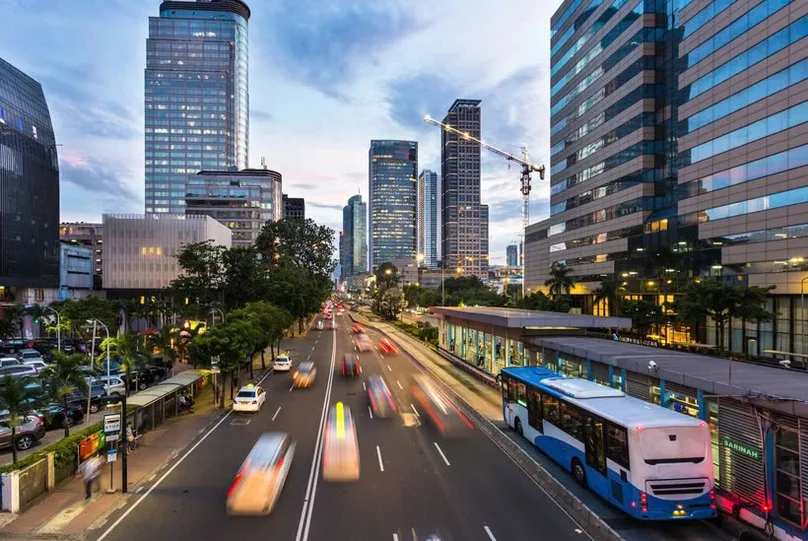
Economy to Grow 5% Amid De-Industrialization Concerns
Businessicy – Experts project that Indonesia’s economic growth will stagnate at 5% in 2025 because policymakers have failed to address early deindustrialization. The industrial sector, a vital pillar of the nation’s economy. Consistently experienced low growth, ranging from 3-4% in recent years.
This stagnation is reflected in the country’s declining Purchasing Managers’ Index (PMI), which has fallen into the contraction zone, signaling weakening industrial activity. Economists warn that the absence of effective policies to revitalize the industrial sector will hinder the nation’s ability to achieve higher economic growth.
Senior economist Didik J. Rachbini of the Institute for Development of Economics and Finance (INDEF) emphasized the urgent need for meaningful action. “With the industrial sector being ignored without meaningful policies like this, is it reasonable for us to hope for 8% growth?” he stated on December 27, 2024.
Didik argued that the industrial sector must be prioritized to unlock the country’s full economic potential. Policies aimed at increasing competitiveness, fostering innovation, and encouraging investment in manufacturing could drive sustainable growth and mitigate the risks of deindustrialization.
The current growth rate, while stable. It fails to provide the transformative economic progress needed to reduce inequality, create jobs, and strengthen Indonesia’s global competitiveness. Economists and policymakers alike have called for a comprehensive strategy to rejuvenate the industrial sector, which is essential for long-term economic stability.
“Microsoft Explores Alternatives to OpenAI for 365 Copilot”
Senior economist Didik J. Rachbini has called for a re-industrialization strategy centered on Indonesia’s abundant natural resources to revitalize the economy. He emphasized that adopting a resource-based, export-led, or outward-looking industrial approach could replicate the success seen in many industrialized nations.
“Without a change in strategy like this, it is impossible to achieve the 8% growth target,” Didik stated. He underscored that a competitive industrial strategy capable of succeeding in international markets is critical to achieving sustainable economic growth.
In addition to the challenges within the industrial sector, Didik highlighted fiscal issues. Particularly the country’s rising state debt. From 2010 to 2024, Indonesia’s debt-to-GDP ratio increased significantly, climbing from 26% to 38.55%. As of September 2024, the government’s total debt stood at Rp8,473.90 trillion (US$524.5 billion).
Didik expressed concern that without addressing these fiscal pressures, Indonesia’s economic resilience could weaken further. He urged policymakers to implement prudent fiscal measures and prioritize industrial strategies to foster economic growth.
The industrial sector, which has shown low growth of just 3-4% in recent years, remains a vital pillar of the economy. It requires targeted policies to overcome early deindustrialization and enhance competitiveness. Didik suggested leveraging Indonesia’s rich natural resources to create value-added products for export and encourage international investments in manufacturing.
Senior economist Didik J. Rachbini has raised concerns over Indonesia’s fiscal policies, describing the country’s debt management as creating an unhealthy political economy. Indonesia’s debt interest rate, at 7.2%, is the highest among ASEAN nations, a figure Didik deems unreasonable.
“The interest rate on this debt bond is the highest compared to ASEAN countries. Indonesia must raise the interest rate with major consequences imposed on the people through taxes,” Didik stated. He stressed that these fiscal policies burden the public and limit the government’s ability to foster sustainable economic growth.
As of September 2024, Indonesia’s government debt reached Rp8,473.90 trillion (US$524.5 billion). With a debt-to-GDP ratio of 38.55%, up from 26% in 2010. Didik warned that the rising debt levels and high interest rates could weaken the country’s economic resilience and hinder its growth prospects.
To address these challenges, Didik emphasized the need for comprehensive fiscal policy reform. He urged policymakers to reduce the reliance on high-interest debt by exploring alternative financing methods and improving tax policies to ensure fairness and efficiency.
Additionally, he called for a robust industrial strategy to complement fiscal reforms. Didik highlighted the potential of a resource-based, export-led industrial approach to boost economic growth. “A competitive industrial strategy capable of thriving in international markets is key to achieving sustainable and higher economic growth,” he explained.
By aligning fiscal reform with strategic industrial policies. Indonesia can reduce its fiscal vulnerabilities while unlocking the potential for long-term growth. Didik’s recommendations underline the importance of balancing fiscal discipline with forward-thinking industrial strategies to position Indonesia as a competitive player in the global economy.
“The Complete Information From Wikipedia About Economy of Indonesia”